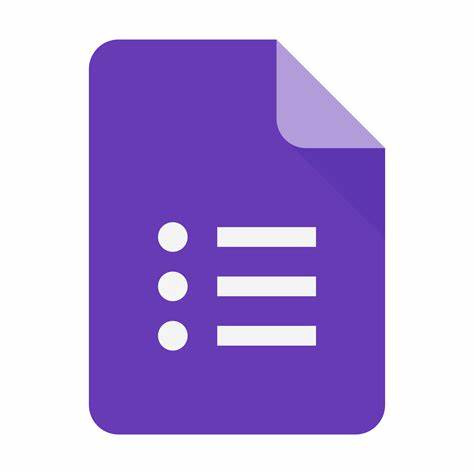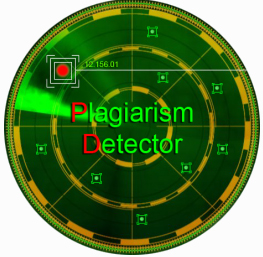IMPLEMENTASI METODE PEMBOBOTAN BERBASIS ATURAN DAN METODE PROFILE MATCHING PADA SISTEM PAKAR MEDIS UNTUK PREDIKSI RISIKO HIPERTENSI
Abstract
Cardiovascular is a disease that often causes death. One of the cardiovascular diseases that often cause death is the risk of Hipertensi. The highest risk factors for premature death and disability in the world are caused by smoking habits, high systolic blood pressure, and increased blood sugar levels. This death factor is because people with Hipertensi generally do not experience any symptoms until their blood pressure is too high which can cause death. Efforts that can be made are by utilizing information technology in the form of a medical expert system to Kelasify the risk of Hipertensi. This study aims to develop a medical expert system in a different way using rule-based weighting methods and profile matching. The weighting method is used to determine the risk weight based on patient variables, while the profile matching method is used to calculate the risk Kelasification based on the core factor and secondary factor variables on the risk of Hipertensi. System evaluation is carried out by comparing asset data taken from the Pima Indian Hipertensi Data (NHANES) with results from the system. The results of the comparison show that the accuracy of the proposed system is 96.67%. The proposed system is also compared with other Kelasification methods such as decision tree, Random Tree, Decision Stump, KNN, Naïve BaYa, Deep Learning, and Rule Induction. Based on the comparison results, the proposed system has a better level of accuracy, therefore the system developed can be used to Kelasify risks for other types of diseases.
Full Text:
PDFReferences
B. Rumagit, J. Pojoh, and V. Manampiring, “Studi Deskriptif Pemberian Obat Pada Pasien Hipertensi Di Puskesmas Sario,” J. Ilm. Farm. Poltekkes Manad., vol. 3, no. 2, 2012.
A. J. Viera, L. W. Cohen, C. M. Mitchell, and P. D. Sloane, “High blood pressure knowledge among primary care patients with known Hipertensi: A North Carolina Family Medicine Research Network (NC-FM-RN) study,” J. Am. Board Fam. Med., vol. 21, no. 4, pp. 300–308, 2008, doi: 10.3122/jabfm.2008.04.070254.
B. P. Medications and M. Changes, “Treatment of Hipertensi: JNC 8 and More,” Res. Cent., vol. 3120, no. February, pp. 209–472, 2014, [Online]. Available: www.PharmacistsLetter.com%5Cnwww.PrescribersLetter.com%5Cnwww.PharmacyTechniciansLetter.com.
Pusdatin, Hipertensi, Second., no. Hari Hipertensi Sedunia. Jakarta Selatan: Kementerian RI, 2014.
Global Road Safety Facility & IHME, “The Global Burden of Disease from Motorized Road Transport,” World Bank Inst. Heal. Metrics Eval., p. 39, 2014, [Online]. Available: http://documents.worldbank.org/curated/en/984261468327002120/pdf/863040IHME0T4H0ORLD0BANK0compressed.pdf.
J. R. Banegas et al., “High prevalence of masked uncontrolled Hipertensi in people with treated Hipertensi,” Eur. Heart J., vol. 35, no. 46, pp. 3304–3312, 2014, doi: 10.1093/eurheartj/ehu016.
H. Soetanto, S. Hartati, R. Wardoyo, and S. Wibowo, “Hipertensi drug suitability evaluation based on patient condition with improved profile matching,” Indones. J. Electr. Eng. Comput. Sci., 2018, doi: 10.11591/ijeecs.v11.i2.pp453-461.
A. A. Abdullah, Z. Zakaria, and N. F. Mohammad, “Design and development of Fuzzy Expert System for diagnosis of Hipertensi,” Proc. - 2011 2nd Int. Conf. Intell. Syst. Model. Simulation, ISMS 2011, no. February 2017, pp. 113–117, 2011, doi: 10.1109/ISMS.2011.27.
X. Y. Djam and Y. H. Kimbi, “Fuzzy Expert System for the Management of Hipertensi,” Pacific J. Sci. Technol., vol. 12, no. 1, pp. 390–402, 2011, [Online]. Available: http://www.akamaiuniversity.us/PJST.htm.
S. Das, P. K. Ghosh, and S. Kar, “Hipertensi diagnosis: A comparative study using fuzzy expert system and neuro fuzzy system,” IEEE Int. Conf. Fuzzy Syst., no. 2005, 2013, doi: 10.1109/FUZZ-IEEE.2013.6622434.
P. Srivastava, A. Srivastava, A. Burande, and A. Khandelwal, “A Note on Hipertensi Kelasification Scheme and Soft Computing Decision Making System,” ISRN Biomath., vol. 2013, pp. 1–11, 2013, doi: 10.1155/2013/342970.
A. Kaur and A. Bhardwaj, “Genetic Neuro Fuzzy System for Hipertensi Diagnosis,” Citeseer, vol. 5, no. 4, pp. 4986–4989, 2014, [Online]. Available: www.ijcsit.com.
R. Kaur and A. Kaur, “Hipertensi Diagnosis Using Fuzzy Expert System,” Int. J. Eng. Res. Appl., vol. 14, no. March, pp. 2248–9622, 2015, [Online]. Available: https://pdfs.semanticscholar.org/b7ad/d498b2927d35640946c249158de32d33f21f.pdf.
Z. Abrishami and H. Tabatabaee, “Design of A Fuzzy Expert System And A Multi-Layer Neural Network System For Diagnosis Of Hipertensi,” Pharmacol. Life Sci. Bull. Env. Pharmacol. Life Sci, no. 11, pp. 138–145, 2015, [Online]. Available: https://pdfs.semanticscholar.org/0753/baef3fb0659fac026017a2c23a2752c55f04.pdf.
J. C. Guzmán, P. Melin, and G. Prado-Arechiga, “A proposal of a fuzzy system for Hipertensi diagnosis,” Adv. Intell. Syst. Comput., vol. 401, pp. 341–350, 2016, doi: 10.1007/978-3-319-26211-6_29.
I. P. Adebayo, “Idowu Peter Adebayo. Predictive Model for the Kelasification of Hipertensi Risk Using Decision Trees Algorithm,” Am. J. Math. Comput. Model., vol. 2, no. 2, pp. 48–59, 2017, doi: 10.11648/j.ajmcm.20170202.12.
J. C. Guzmán, P. Melin, and G. Prado-Arechiga, “Fuzzy optimized Kelasifier for the diagnosis of blood pressure using genetic algorithm,” Stud. Comput. Intell., vol. 749, pp. 309–318, 2018, doi: 10.1007/978-3-319-71008-2_23.
I. Z. Jibril, J. Agajo, L. A. Ajao, J. G. Kolo, and O. C. Inalegwu, “Development of a Medical Expert System for Hypertensive Patients Diagnosis: A Knowledge-Based Rules,” Adv. Electr. Telecommun. Eng., vol. 1, no. 1, pp. 39–47, 2018.
I. Miramontes, G. Martínez, P. Melin, and G. Prado-Arechiga, “A hybrid intelligent system model for Hipertensi risk diagnosis,” Adv. Intell. Syst. Comput., vol. 648, pp. 202–213, 2018, doi: 10.1007/978-3-319-67137-6_22.
W. Jie, P. Yan, R. Xiaoxiao, and Q. Yixuan, An expert system for diagnosis and treatment of Hipertensi based on ontology, vol. 952. Springer Singapore, 2018.
P. Melin, I. Miramontes, and G. Prado-Arechiga, “A hybrid model based on modular neural networks and fuzzy systems for Kelasification of blood pressure and Hipertensi risk diagnosis,” Expert Syst. Appl., vol. 107, pp. 146–164, 2018, doi: 10.1016/j.eswa.2018.04.023.
P. Melin and G. Prado-Arechiga, “Neuro-fuzzy modular approaches for Kelasification of arterial Hipertensi with a method for the expert rules optimization,” SpringerBriefs Appl. Sci. Technol., vol. 0, no. 9783319611488, pp. 23–47, 2018, doi: 10.1007/978-3-319-61149-5_4.
M. S. Hossain, Fatema-Tuj-Johora, and K. Andersson, “A belief rule based expert system to assess Hipertensi under uncertainty,” J. Internet Serv. Inf. Secur., vol. 9, no. 4, pp. 18–38, 2019, doi: 10.22667/JISIS.2019.11.30.018.
R. Elshawi, M. H. Al-Mallah, and S. Sakr, “On the interpretability of machine learning-based model for predicting Hipertensi,” BMC Med. Inform. Decis. Mak., vol. 19, no. 1, 2019, doi: 10.1186/s12911-019-0874-0.
M. A. J. Tengnah, R. Sooklall, and S. D. Nagowah, A predictive model for Hipertensi diagnosis using machine learning techniques. Elsevier Inc., 2019.
W. Chang et al., “A machine-learning-based prediction method for Hipertensi outcomes based on medical data,” Diagnostics, vol. 9, no. 4, 2019, doi: 10.3390/diagnostics9040178.
N. A. Shiraz H.E, “Using Fuzzy Logic to Enhance the Kelasification and Diagnosing of Hypertention,” J. Theor. Appl. Inf. Technol., vol. 97, no. 20, pp. 2430–2440, 2019.
M. Nour and K. Polat, “Automatic Kelasification of Hipertensi Types Based on Personal Features by Machine Learning Algorithms,” Math. Probl. Eng., vol. 2020, pp. 1–14, 2020, doi: 10.1155/2020/2742781.
M. Ambika, G. Raghuraman, and L. SaiRamesh, “Enhanced decision support system to predict and prevent Hipertensi using computational intelligence techniques,” Soft Comput., vol. 24, no. 17, pp. 13293–13304, 2020, doi: 10.1007/s00500-020-04743-9.
S. P. Chatrati et al., “Smart home health monitoring system for predicting type 2 diabetes and Hipertensi,” J. King Saud Univ. - Comput. Inf. Sci., no. xxxx, 2020, doi: 10.1016/j.jksuci.2020.01.010.
F. López-Martínez, E. R. Núñez-Valdez, R. G. Crespo, and V. García-Díaz, “An artificial neural network approach for predicting Hipertensi using NHANES data,” Sci. Rep., vol. 10, no. 1, pp. 1–14, 2020, doi: 10.1038/s41598-020-67640-z.
B. Williams and S. Cremaschi, “Kelasification Models,” Comput. Aided Chem. Eng., p. 5, 2020.
A. Suhartanto, “Decision Support System untuk Penilaian Kinerja Guru dengan Metode Profile Matching,” J. Komput. Terap., vol. 2, no. 2, pp. 149–158, 2016.
DOI: https://doi.org/10.33365/jti.v15i2.1523
Refbacks
- There are currently no refbacks.
Copyright (c) 2021 Agus Wantoro, Admi Syarif, Khairun Nisa Berawi, Kurnia Muludi, Sri Ratna Sulistiyanti, Sutyarso Sutyarso

This work is licensed under a Creative Commons Attribution-ShareAlike 4.0 International License.
JURNAL TEKNOINFO
Published by Universitas Teknokrat Indonesia
Organized by Prodi S1 Informatika FTIK Universitas Teknokrat Indonesia
W: http://ejurnal.teknokrat.ac.id/index.php/teknoinfo/index
E : teknoinfo@teknokrat.ac.id.
Jl. Zainal Abidin Pagaralam, No.9-11, Labuhan Ratu, Bandarlampung

This work is licensed under a Creative Commons Attribution-ShareAlike 4.0 International License.
Jumlah Pengunjung : View Teknoinfo StatsCounter



















